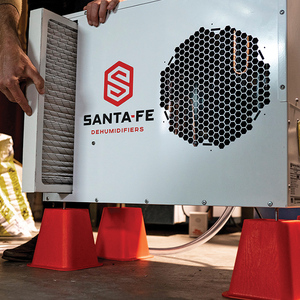A/C Disconnect: Fused vs. Non-Fused
For installation of an A/C service disconnect, is there any advantage to using a fused disconnect vs a non-fused disconnect? Is this a local code / practice issue?
The box that came with the new A/C we are installing is fused. The original disconnect is non-fused.
Are there any concerns with proper coordination with the 35A circuit breaker feeding this circuit?
Thanks in advance
Scott



















Replies
Well the first thing is that look at the label.
In most cases it will give a maxiumum FUSE OR HVACR BREAKER. In that case either can be used. Most breakers are HVACR rated, but you need to check the label on that size breaker.
If that is the case that is the only protection that you need.
If only says fuses then you should add fuses and the most practical way to do that is at the disconnect.
Fuses are somewhat more relable, but if it blows you are out of AC (and heat if also a heat pump) and some of those fuses are not that too common.
BTW, I found that my AC was feed by a way oversized feeder and breaker. And the panel is obsolete and replacement breakers are expensive and it just had a switched disconnect.
Now the AC was only listed for a fuse (20 or 25 amps IIRC), but all of the fused disconnected at the hardware and box stores took styles of fuses that they only stocked in much larger sizes.
So I cheated and got a SQ D disconnect with a molded switch and replced that molded switch with the appropriate sized breaker.
code around here is nonfused disconnect.
Used to be some AC units had oddball fusing limits. Breakers are limited to more regular and more widely spaced increments than fuses. In that case fused disconnects made a lot of sense.
For the last decades residential AC units have included internal load limits, Klixons or internal breakers and the feeder fusing requirements have been regularized to commonly available breaker sizes. Because of this need and desirability, breakers at a central panel are more convenient, of fusing at the disconnect has largely passed. Been a long time since I installed a fused disconnect for an AC unit.
Almost exclusively I have been installing unfused pull-out disconnects for residences. The pull-out type have the advantage that a serviceman working on the unit can pocket the link and essentially eliminate the danger of someone energizing the unit inadvertently. They are also cheap and quite reliable. Keeps the builders and service people happy.
fused or non fused a/c disconnect
If the air handler (furnace) and the condenser have separate main panel breakers, Then you can have a non fused pull out on the condensor If the air handler and condenser are on 1 breaker in the main panel then the condenser should have a FUSED disconnect for the correct amp fuses Electric heat on the air handler requires larger amps for the resistant heater than the condensor unit
Equipment Needs Protection
The air conditioner needs to be protected against overcurrents and short circuits.
The label on the equipment will give you the specificatoins for this protection. The protection can be at the disconnect, or at the panel.
IF the protection at the panel is what the equipment needs, you need not have a fused disconnect.
IF the equipment says 'fuse size," and does not mention breakers at all, you're supposed to have a fuse somewhere- and that 'somewhere' is usually the disconnect.
IF the breaker at the panel is too large - say, a 40 amp breaker and the equipment calls for maximum 35 amp protection, having a fuse at the disconnect is often the easiest and cheapest way to provide it. How many 35 amp breakers have you seen?
Now, about that disconnect ...
I don't like the usual disconnects, with a piece that you pull out. It's too easy to lose or damage that piece. For a few dollars difference, you can do much better.
My personal favorite is the Square D QO200TR. This disconnect - readily avaliable for less than $20- has a switch in it that looks like a breaker. You can replace the switch with a QO-type breaker in virtually every use these days.